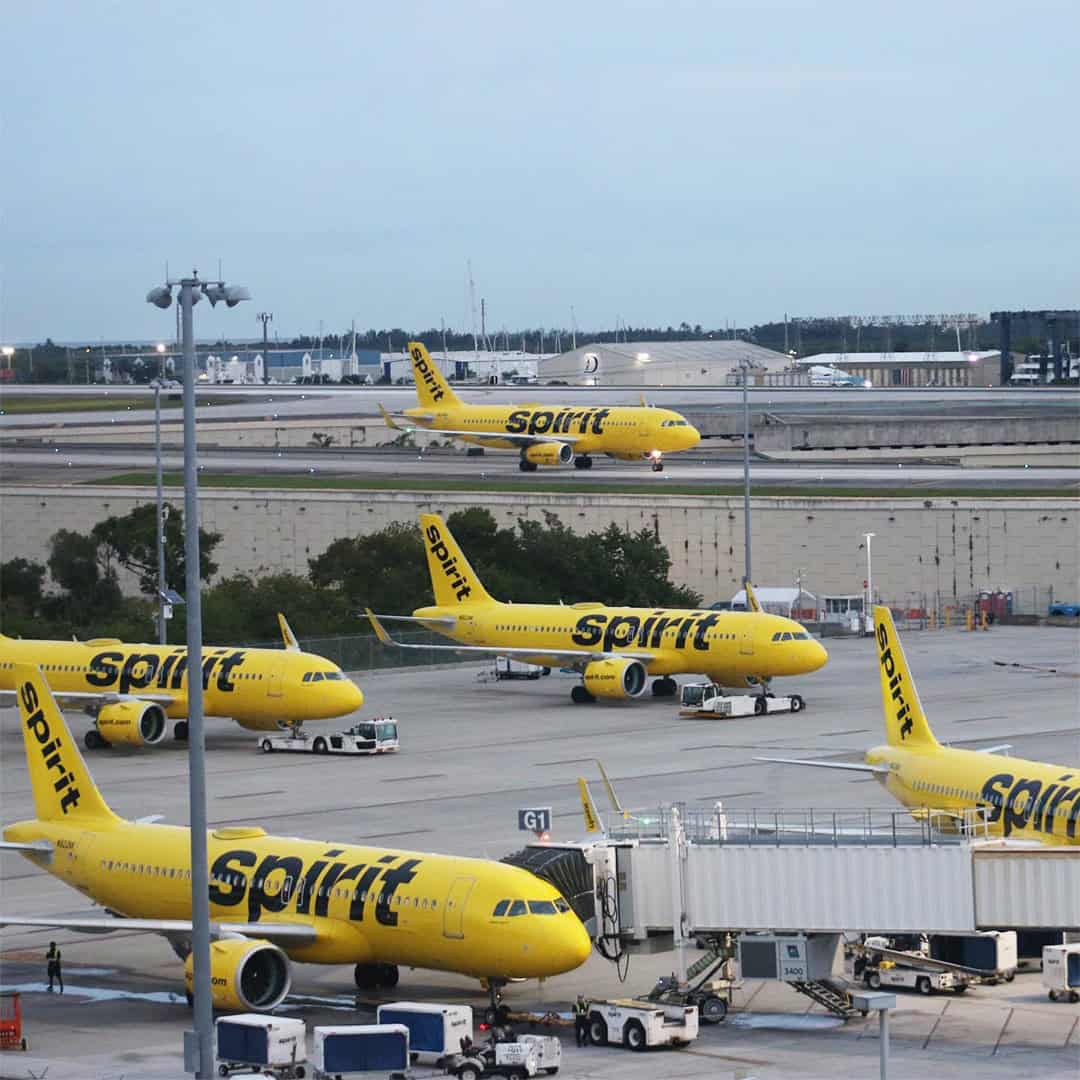For the second time in a year, Spirit Airlines files for bankruptcy, pledging to cut costs and refocus on profitable markets.
Spirit Airlines has filed for Chapter 11 bankruptcy for the second time in less than a year, highlighting just how tough the skies have become for the ultra-low-cost carrier (ULCC) model in today’s turbulent aviation market.
The Dania Beach, Fla.–based airline announced on Friday, 29 August, that it has commenced a voluntary restructuring process in the US Bankruptcy Court for the Southern District of New York. Spirit insists that flights, ticket sales, reservations, loyalty redemptions, and day-to-day operations will continue as normal during the process.
From Quick Fix to Deep Overhaul

Spirit previously filed for Chapter 11 in November 2024, emerging just four months later in March with a leaner balance sheet after creditors swapped debt for equity. At that time, management avoided dramatic changes such as significant fleet reductions or network shrinkage, hoping cost discipline and equity infusions would stabilize the carrier.
That bet has not paid off. Since exiting bankruptcy in March, Spirit reported losses approaching $257 million by the end of June, compared with a forecast profit of $252 million. Persistently high operating costs, weaker domestic fares, and a glut of US seat capacity dragged the ULCC back into financial distress.
Earlier this month, Spirit Airlines even issued a going-concern warning, admitting at the time that there was “substantial doubt” about the company’s ability to keep operating over the next 12 months without drastic changes or an infusion of cash.
It seems that the writing may have already been on the wall at that point.
Now, CEO Dave Davis says Spirit must go further:
It has become clear that there is much more work to be done, and many more tools are available to best position Spirit for the future. A court-supervised process is the best path forward to make the changes needed to ensure our long-term success.
Dave Davis, Spirit Airlines President and Chief Executive Officer
Key Elements of the Restructuring Plan

Spirit’s new bankruptcy strategy calls for broad, structural changes rather than quick fixes. Among its stated priorities:
- Network Redesign: The carrier will double down on its focus cities, providing more frequencies and connectivity while exiting underperforming markets.
- Fleet Optimization: Spirit will “rightsize” its Airbus narrowbody fleet to better match profitable demand, reducing lease obligations and targeting hundreds of millions in annual savings.
- Cost Structure Adjustments: Building on its reputation as an industry cost leader, Spirit plans additional efficiencies across operations.
- Product Segmentation: The airline will lean into its tiered offerings—Spirit First, Premium Economy, and its core Value fare—giving travelers more premium upsell opportunities while maintaining its ULCC ethos.
Unlike its last trip through bankruptcy, this restructuring explicitly acknowledges the need to shrink and realign both network and fleet, which are moves that aircraft lessors and creditors have reportedly been pushing for.
While Chapter 11 Is Common in US Aviation, a Second Filing in One Year Sets a New Precedent

Spirit is hardly alone in using Chapter 11 as a survival tool. Virtually every major US carrier has done so at some point, from United and Delta in the early 2000s to American after the 2008 financial crisis.
But, as Spirit Airlines files for bankruptcy for the second time in less than a year, it is unprecedented for a major US airline in recent history. The company faces an uphill battle: ongoing competition from Frontier Airlines, which just announced 20 new routes targeting Spirit’s markets, and lingering operational pressures, including the Pratt & Whitney GTF engine recall that grounded portions of its A320neo fleet.
Add to this the fallout of a failed merger with JetBlue—blocked in federal court in 2024—and Spirit finds itself squeezed on all sides.
What It Means for Passengers and the Industry

For now, Spirit insists travelers will see little change. Flights are operating, loyalty perks remain intact, and employees will continue receiving pay and benefits. Yet history shows that deeper restructuring often means fewer aircraft, fewer routes, and a smaller footprint. We’ve said this before, but it is hard to imagine that this new filing won’t have a massive effect on Spirit’s operations.
For the rest of the airline industry, Spirit’s struggles raise bigger questions about the future of the ULCC model in a market increasingly dominated by the Big Four. With domestic yields under pressure and capacity growth outpacing demand, leaner carriers like Spirit may have to evolve—or risk extinction.
Here’s Hoping for a Good Outcome
Spirit’s website for its restructuring, www.spiritrestructuring.com, offers transparency to passengers and stakeholders as the process unfolds. But for most, the real story will be whether Spirit’s “reset” finally delivers a sustainable business model—or if this is the beginning of the end for America’s largest budget airline.
For now, the yellow jets still fly, but the road ahead will test just how much turbulence the ULCC model can withstand. Our hearts go out to our readers who are in any way connected to Spirit, whether they’re pilots, flight attendants, maintenance crew, or airport personnel. We at Avgeekery wish our friends at Spirit nothing but the very best.
